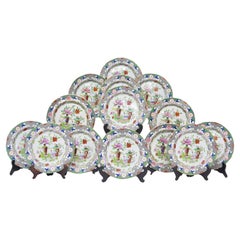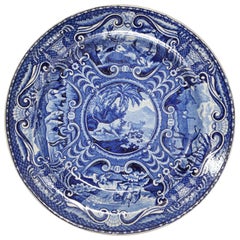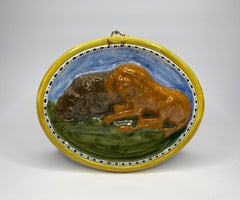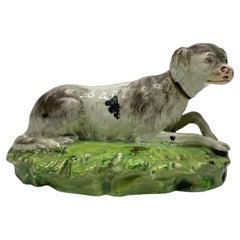Georgian Firing Glass
Antique Early 19th Century English Chinoiserie Porcelain
Ironstone
Antique 1820s English Georgian Dinner Plates
Earthenware
Recent Sales
Antique 1810s English Georgian Pottery
Pottery
Antique 1820s English Georgian Pottery
Pottery
Antique Early 1800s English Georgian Pottery
Terracotta
Antique 1810s English Georgian Pottery
Pottery
Antique 1820s English Georgian Pottery
Ironstone
Antique 1770s German Georgian Porcelain
Porcelain
Antique 1870s German Georgian Porcelain
Porcelain
Antique 1830s English Georgian Pottery
Pottery
Antique Early 1800s English Georgian Pottery
Pottery
Antique 1790s English Georgian Pottery
Pearlware
Vintage 1920s German Georgian Porcelain
Porcelain
Antique 1820s English Georgian Pottery
Pottery
Antique 1770s German Georgian Porcelain
Porcelain
Antique 1760s English Georgian Porcelain
Porcelain
Antique 1750s German Georgian Porcelain
Porcelain
Antique 1770s English Georgian Porcelain
Porcelain
Antique 1740s German Georgian Porcelain
Porcelain
Antique 1830s English Georgian Pottery
Earthenware
Antique 1820s English Georgian Porcelain
Porcelain
Antique 1820s English Georgian Porcelain
Porcelain
Antique 1820s English Georgian Ceramics
Earthenware
Antique 1750s English Georgian Delft and Faience
Delft
Antique 1760s Dutch Georgian Delft and Faience
Delft
Antique 1760s British Glass
Glass
Antique 1750s British Georgian Glass
Glass
Antique 18th Century English George III Crystal Serveware
Glass
Antique 19th Century English Georgian Serving Pieces
Porcelain
Antique Mid-18th Century English George III Glass
Glass
Antique 1760s Georgian Pottery
Pottery
Antique 1770s English Georgian Pottery
Delft
Antique 1830s English Georgian Porcelain
Porcelain
Antique 1830s English Georgian Ceramics
Porcelain
Antique 1830s English Georgian Pottery
Pottery
Antique Early 1800s English Georgian Pottery
Pottery
Antique 1790s English Georgian Pottery
Pottery
Antique 1790s English Georgian Pottery
Earthenware
Antique Early 1800s English Georgian Pottery
Pottery
Antique Early 1800s English Georgian Pottery
Pottery
Antique 1810s Welsh Georgian Porcelain
Porcelain
Antique 1810s English Georgian Pottery
Ironstone
Antique 1830s English Georgian Pottery
Pottery
Antique 1830s English Georgian Pottery
Pottery
Antique 1730s German Georgian Porcelain
Porcelain
Antique Early 1800s English Georgian Pottery
Pottery
Antique 1870s German Georgian Porcelain
Porcelain
Antique 1830s English Georgian Pottery
Pottery
Antique Early 1800s English Georgian Porcelain
Porcelain
Antique 1790s European Georgian Pottery
Pottery
Antique 1830s English Georgian Pottery
Earthenware
Antique 1750s German Georgian Porcelain
Porcelain
Antique 1810s English Georgian Pottery
Creamware
Antique 1820s English Georgian Ceramics
Earthenware
Antique 1830s English Georgian Porcelain
Porcelain
Antique Early 1800s European Georgian Porcelain
Porcelain
Antique 1720s French Georgian Porcelain
Porcelain
Antique 1820s English Georgian Porcelain
Porcelain
Antique 1750s English Georgian Porcelain
Porcelain
People Also Browsed
Antique 1870s English Georgian Fireplaces and Mantels
Pine
21st Century and Contemporary British Chinoiserie Wallpaper
Paper
21st Century and Contemporary French Post-Modern Chandeliers and Pendants
Metal
Vintage 1920s English Dinner Plates
Porcelain
Vintage 1910s English Neoclassical Dinner Plates
Porcelain
Mid-20th Century Sterling Silver
Sterling Silver
2010s Italian Modern Wall Lights and Sconces
Fabric
Mid-20th Century Dutch Chinoiserie Table Lamps
Brass
Vintage 1940s American Georgian Sideboards
Brass
20th Century English Georgian Sideboards
Hardwood
Vintage 1980s American Georgian Bookcases
Brass
Late 20th Century American Georgian Commodes and Chests of Drawers
Brass
Vintage 1980s American Georgian Dressers
Brass
20th Century Georgian Vitrines
Brass
Antique 1780s British Georgian Desks
Walnut
Antique Late 18th Century English Georgian Sofa Tables
Mahogany
Georgian Firing Glass For Sale on 1stDibs
How Much is a Georgian Firing Glass?
Finding the Right Serveware, Ceramics, Silver And Glass for You
Your dining room table is a place where stories are shared and personalities shine — why not treat yourself and your guests to the finest antique and vintage glass, silver, ceramics and serveware for your meals?
Just like the people who sit around your table, your serveware has its own stories and will help you create new memories with your friends and loved ones. From ceramic pottery to glass vases, set your table with serving pieces that add even more personality, color and texture to your dining experience.
Invite serveware from around the world to join your table settings. For special occasions, dress up your plates with a striking Imari charger from 19th-century Japan or incorporate Richard Ginori’s Italian porcelain plates into your dining experience. Celebrate the English ritual of afternoon tea with a Japanese tea set and an antique Victorian kettle. No matter how big or small your dining area is, there is room for the stories of many cultures and varied histories, and there are plenty of ways to add pizzazz to your meals.
Add different textures and colors to your table with dinner plates and pitchers of ceramic and silver or a porcelain lidded tureen, a serving dish with side handles that is often used for soups. Although porcelain and ceramic are both made in a kiln, porcelain is made with more refined clay and is more durable than ceramic because it is denser. The latter is ideal for statement pieces — your tall mid-century modern ceramic vase is a guaranteed conversation starter. And while your earthenware or stoneware is maybe better suited to everyday lunches as opposed to the fine bone china you’ve reserved for a holiday meal, handcrafted studio pottery coffee mugs can still be a rich expression of your personal style.
“My motto is ‘Have fun with it,’” says author and celebrated hostess Stephanie Booth Shafran. “It’s yin and yang, high and low, Crate & Barrel with Christofle silver. I like to mix it up — sometimes in the dining room, sometimes on the kitchen banquette, sometimes in the loggia. It transports your guests and makes them feel more comfortable and relaxed.”
Introduce elegance at supper with silver, such as a platter from celebrated Massachusetts silversmith manufacturer Reed and Barton or a regal copper-finish flatware set designed by International Silver Company, another New England company that was incorporated in Meriden, Connecticut, in 1898. By then, Meriden had already earned the nickname “Silver City” for its position as a major hub of silver manufacturing.
At the bar, try a vintage wine cooler to keep bottles cool before serving or an Art Deco decanter and whiskey set for after-dinner drinks — there are many possibilities and no wrong answers for tableware, barware and serveware. Explore an expansive collection of antique and vintage glass, ceramics, silver and serveware today on 1stDibs.
- 1stDibs ExpertApril 5, 2022There are a few tell-tale signs you can look for to determine whether your Georgian glass is real or fake. Authentic Georgian glass was created in three phases and then merged together. Look for the join at the base of the glass to the stem—this is the pontil scar or mark. Also, the foot of the glass will be wider than the bowl. Shop a collection of authentic Georgian glass from some of the world’s top boutiques on 1stDibs.
- 1stDibs ExpertApril 5, 2022To identify Georgian glass, look for marks indicative of the manufacturing process. Authentic Georgian glass will have an indentation on the bottom called a pontil. In addition, you should see vertical striations in the glass. You'll find a wide variety of expertly vetted Georgian glass on 1stDibs.
- 1stDibs ExpertApril 5, 2022Real Georgian glass was made during what is known as the Georgian period in the 17th and 18th centuries. The glass was made in three pieces: the base, stem and bowl. The process created several marks, which can help authenticate a piece of Georgian glass, including a pontil mark (found on the base) and vertical lines or marks around the bowl. Collectors should work with an appraiser to confirm the authenticity of Georgian glass. Find a selection of expertly vetted Georgian glass on 1stDibs.



